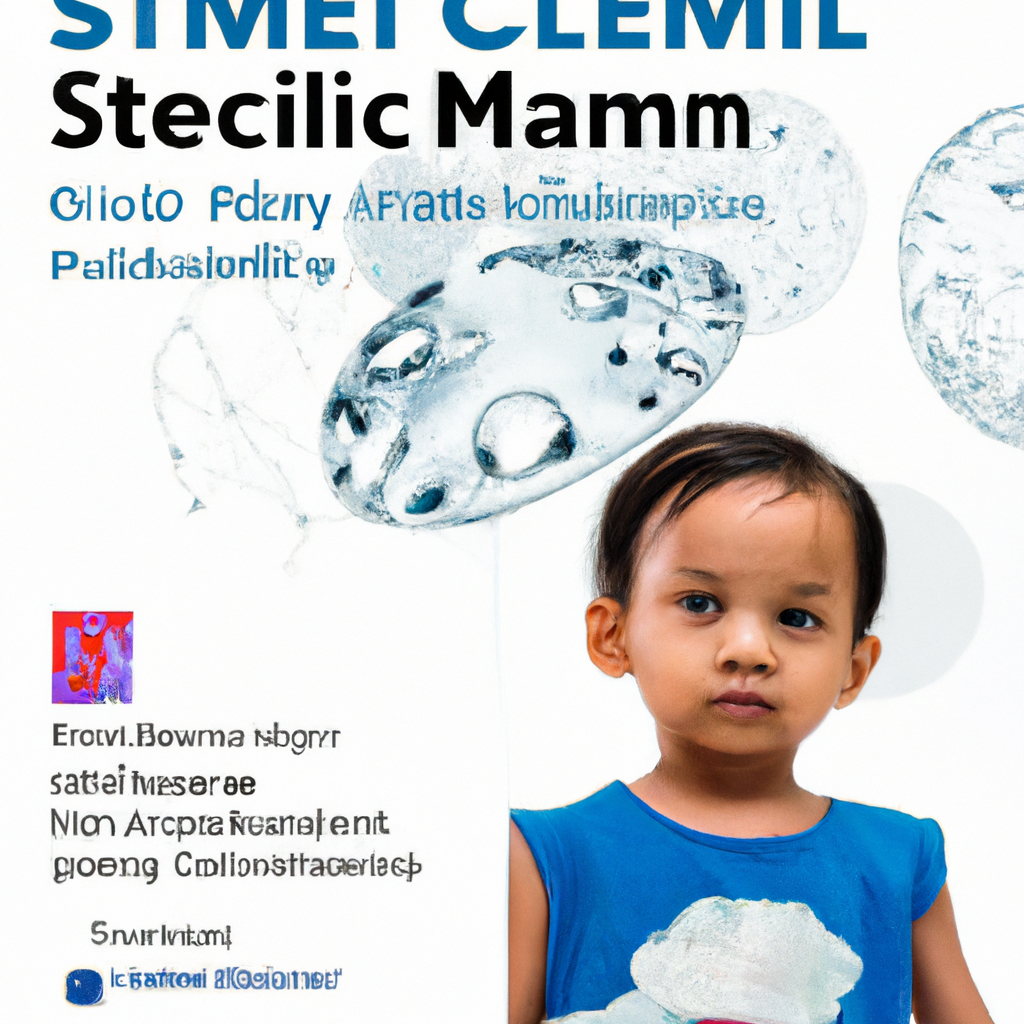Are you curious about the availability of stem cell banking services in Malaysia? Look no further! In this comprehensive guide, we will delve into the world of stem cell banking and provide you with all the information you need. From the benefits of stem cell banking to the process involved, we will cover every aspect to ensure you have a clear understanding. So, whether you are considering stem cell banking for personal or medical reasons, this guide will serve as your go-to resource. Let’s explore the availability of stem cell banking services in Malaysia together!

Understanding Stem Cell Banking
What is stem cell banking?
Stem cell banking refers to the process of collecting and storing stem cells for potential future use. Stem cells have the unique ability to differentiate into various types of cells in the body, making them valuable for treating a wide range of medical conditions. Stem cell banking allows individuals to preserve their own stem cells for the possibility of using them in personalized regenerative therapies.
Why is stem cell banking important?
Stem cell banking is important because it provides individuals with a form of biological insurance. By storing their own stem cells, people can access these cells later in life if they develop medical conditions that can be treated with stem cell therapies. These conditions may include certain types of cancer, autoimmune diseases, and degenerative disorders. Stem cell banking offers hope for future medical advancements and personalized treatments.
Types of stem cell banking
There are two main types of stem cell banking: public and private. Public stem cell banking involves donating stem cells to a public bank where they can be used by anyone in need. Private stem cell banking, on the other hand, involves storing stem cells for personal use or for use by family members. Private stem cell banking provides the advantage of having a match readily available for personalized treatments.
Benefits of stem cell banking
Stem cell banking offers several benefits. Firstly, it provides a potential source of treatment for various medical conditions. Additionally, banking stem cells ensures that the cells are preserved in their optimal state, maintaining their viability for future use. Stem cell banking also eliminates the need to search for a matching donor, as the stored cells are a perfect match for the individual or their family members. Furthermore, stem cell banking provides peace of mind, knowing that there is a backup plan and potential solution for future health needs.
Current trends in stem cell banking
In recent years, stem cell banking has gained popularity due to advancements in regenerative medicine and increased awareness of the potential benefits of stem cell therapies. The demand for stem cell banking services has led to an increase in the number of stem cell banks in Malaysia. These banks offer various services and options to cater to the diverse needs and preferences of individuals and families.
Regulations and Accreditation
Regulatory bodies overseeing stem cell banking in Malaysia
In Malaysia, stem cell banking is regulated by several regulatory bodies to ensure the safety and quality of the process. The main regulatory bodies overseeing stem cell banking include the Ministry of Health (MOH), National Pharmaceutical Regulatory Agency (NPRA), and Malaysian Stem Cell Registry (MSCR). These bodies enforce guidelines and regulations to protect the interests of individuals and promote ethical practices in stem cell banking.
Accreditation process for stem cell banks in Malaysia
Stem cell banks in Malaysia undergo a rigorous accreditation process to ensure that they meet the highest standards of quality and safety. The accreditation process involves a comprehensive evaluation of the bank’s facilities, equipment, procedures, and staff qualifications. Accredited stem cell banks are regularly audited to maintain their accreditation status, providing reassurance to individuals who choose to store their stem cells with them.
Importance of choosing an accredited stem cell bank
Choosing an accredited stem cell bank is crucial as it guarantees the quality and reliability of the banking process. Accredited banks adhere to strict standards and protocols to ensure the preservation and viability of the stored stem cells. They also comply with ethical guidelines, ensuring that the use of stem cells is in line with established regulations. By opting for an accredited stem cell bank, individuals can have confidence in the safety and effectiveness of their stored stem cells.
Available Stem Cell Banking Services
Leading stem cell banks in Malaysia
Malaysia is home to several leading stem cell banks that provide comprehensive stem cell banking services. These banks have established a reputation for their expertise, state-of-the-art facilities, and commitment to quality. Some of the prominent stem cell banks in Malaysia include Bank XYZ, StemCell Malaysia, and LifeBank. Each bank offers unique features and options, allowing individuals to find the best fit for their specific needs.
Services offered by stem cell banks
Stem cell banks in Malaysia offer a range of services to cater to the diverse requirements of individuals and families. These services typically include stem cell collection, processing, and storage. Collection methods may include cord blood banking, where stem cells are obtained from the umbilical cord after birth, or peripheral blood stem cell collection, which involves collecting stem cells from circulating blood. The banks also provide comprehensive storage facilities, ensuring the long-term preservation of the stem cells.
Comparison of services and pricing
Different stem cell banks may offer varying services and pricing options. It is essential to compare the services provided by different banks to make an informed decision. Factors to consider include the collection methods available, storage conditions, storage duration, and additional services such as genetic testing. Pricing structures may vary based on the services included and the duration of storage. It is advisable to carefully review the service packages and pricing of different banks to choose the best option for individual needs and preferences.
Quality assurance measures
Stem cell banks employ stringent quality assurance measures to ensure the safety and viability of the stored stem cells. These measures include regular testing to assess the quality of the collected stem cells, as well as monitoring and maintaining optimal storage conditions. Accredited banks follow strict protocols to minimize the risk of contamination and ensure the integrity of the samples. Quality assurance measures play a crucial role in ensuring the effectiveness of stem cell banking and the potential success of future treatments.
Stem Cell Collection and Storage Process
Methods of stem cell collection
Stem cells can be collected through various methods, depending on the source of the cells. The most common method of stem cell collection is cord blood banking. After a baby is born, the umbilical cord is clamped and cut, and the remaining blood in the cord is collected and processed to extract the stem cells. Another method is peripheral blood stem cell collection, which involves taking a sample of blood from the individual’s peripheral circulation and separating the stem cells from the rest of the blood components.
Processing and storage procedures
Once the stem cells are collected, they undergo a processing procedure to isolate and concentrate the stem cells. Processing involves separating the stem cells from other blood components and preparing them for storage. Stem cells are stored in specialized cryogenic containers at extremely low temperatures (-196°C) to maintain their viability and integrity. These storage facilities utilize advanced technology and monitoring systems to ensure the optimal conditions for long-term storage.
Conditions for preserving stem cells
Preserving stem cells requires specific conditions to maintain their viability and functionality. Stem cells must be stored at ultra-low temperatures to prevent degradation and preserve their regenerative capacity. The storage facilities used by stem cell banks are equipped to maintain the required temperature and provide secure and stable storage conditions. In addition to temperature control, the storage facilities also protect the samples from contamination, light exposure, and physical damage.
Long-term storage options
Stem cell banks offer long-term storage options, allowing individuals to preserve their stem cells for an extended period. The duration of storage can range from several years to several decades, depending on the chosen package and individual preferences. Long-term storage provides the flexibility for individuals to access their stem cells when needed, ensuring their availability for potential future treatments and therapies.

Eligibility and Precautions
Eligibility criteria for stem cell banking
The eligibility criteria for stem cell banking may vary depending on the stem cell bank and the specific requirements. In general, individuals who are considering stem cell banking should ensure that they meet the bank’s age requirements and health criteria. The eligibility criteria commonly include limitations on certain medical conditions or genetic disorders. It is advisable to consult with the chosen stem cell bank or healthcare professionals to determine individual eligibility and suitability for stem cell banking.
Medical conditions affecting eligibility
Certain medical conditions or genetic disorders may affect the eligibility for stem cell banking. Individuals with certain blood disorders, immune system disorders, or cancer may have restrictions on their eligibility for stem cell banking. Additionally, certain genetic disorders or inherited conditions may impact eligibility. It is essential to disclose any relevant medical history or conditions to the stem cell bank during the eligibility assessment process for an accurate evaluation.
Precautions and considerations before banking stem cells
Before deciding to bank stem cells, individuals should consider potential risks, limitations, and costs associated with the process. It is important to have a clear understanding of the financial commitment involved, including initial fees, annual storage fees, and additional charges for specialized services. Additionally, individuals should assess their current and future healthcare needs and discuss the potential benefits and limitations of stem cell banking with their healthcare professionals. Seeking professional advice and conducting thorough research can help individuals make an informed decision.
Benefits and Future Potential
Medical conditions treatable with stem cells
Stem cells have shown promise in treating various medical conditions. Some of the conditions that can potentially be treated with stem cells include certain types of cancer, such as leukemia and lymphoma, as well as blood disorders like thalassemia and sickle cell disease. Stem cell therapies have also been explored for the treatment of autoimmune diseases, such as multiple sclerosis and rheumatoid arthritis, and degenerative disorders like Parkinson’s disease and spinal cord injuries.
Potential future applications of stem cells
The potential future applications of stem cells are vast and continue to be explored through ongoing research and clinical trials. Stem cell therapies hold promise for the treatment of neurological disorders, cardiac conditions, diabetes, and age-related macular degeneration, among others. Additionally, scientists are investigating the use of stem cells in tissue engineering and regenerative medicine to repair and replace damaged or diseased tissues and organs.
Advancements in stem cell research
Advancements in stem cell research have revolutionized the field of regenerative medicine and opened up new possibilities for medical treatments. Researchers continue to make significant breakthroughs in understanding the behavior of stem cells and their potential applications. These advancements include the development of induced pluripotent stem cells (iPSCs), which are reprogrammed adult cells with the ability to differentiate into various cell types. iPSCs offer a renewable source of patient-specific cells for personalized therapies.

Patient Experiences and Testimonials
Stories of individuals who have utilized stem cell banking services
There are numerous inspiring stories of individuals who have benefitted from stem cell banking services. These stories often highlight the role of stored stem cells in providing potential treatments for life-threatening conditions or improving the quality of life for individuals facing chronic illnesses. Many individuals have shared their experiences of successfully utilizing their stored stem cells to undergo life-saving transplants or regenerative therapies.
Impacts of stem cell banking on patients’ lives
Stem cell banking has had a significant impact on the lives of individuals and their families. For some, it has provided a sense of security and peace of mind, knowing that they have a backup plan in case of future medical needs. Stem cell banking has also offered hope and improved quality of life for patients facing serious medical conditions. The availability of stored stem cells has eliminated the need to find a suitable donor, reducing the time and potential complications associated with the search process.
Testimonials from satisfied customers
Numerous satisfied customers have shared their positive experiences and testimonials regarding stem cell banking. These testimonials often highlight the professionalism, expertise, and excellent customer service provided by the stem cell banks. Customers appreciate the smooth and efficient process of stem cell collection, processing, and storage, as well as the peace of mind that comes with knowing their stem cells are safely preserved for future use. The testimonials reflect the trust and confidence that individuals place in the stem cell banking services.
Choosing the Right Stem Cell Bank
Factors to consider when selecting a stem cell bank
Choosing the right stem cell bank is a crucial decision that requires careful consideration. Several factors should be taken into account, including the accreditation status of the bank, the reputation and track record of the bank, the range of services offered, and the pricing structure. Additionally, it is essential to evaluate the storage facilities and equipment used by the bank, as well as the expertise and qualifications of the staff. Considering these factors can help individuals make an informed choice and select a stem cell bank that meets their specific needs and requirements.
Consulting with healthcare professionals
Consulting with healthcare professionals can provide valuable guidance and insights when selecting a stem cell bank. Healthcare professionals, such as doctors, genetic counselors, or specialists in regenerative medicine, can provide information about the potential benefits of stem cell banking based on an individual’s medical history, family history, and specific health concerns. They can also offer recommendations or referrals to reputable stem cell banks that have a track record of providing quality services.
Customer reviews and reputation
Customer reviews and reputation play an important role in evaluating the credibility and reliability of stem cell banks. Reading customer reviews and testimonials can provide valuable insights into the overall customer experience, satisfaction with the services received, and the effectiveness of the stem cell banking process. It is advisable to research the reputation and track record of different stem cell banks, including any positive or negative feedback from customers, to make an informed decision.

Current Challenges and Future Outlook
Obstacles faced by stem cell banks in Malaysia
Stem cell banks in Malaysia face several challenges in their operations. One of the main challenges is the lack of awareness and understanding among the general public about the benefits and potential of stem cell banking. Overcoming this challenge requires increased education and advocacy to inform individuals about the importance of stem cell banking and its future potential. Additionally, stem cell banks must continuously adapt to evolving regulations and comply with strict guidelines to ensure ethical practices and maintain accreditation status.
Government initiatives and support
The Malaysian government has shown support for stem cell banking initiatives through various initiatives and policies. The Ministry of Health has implemented regulations and guidelines to ensure the safety and quality of stem cell banking practices. The government has also established the Malaysian Stem Cell Registry (MSCR) to promote ethical practices and monitor the activities of stem cell banks. These government initiatives contribute to the overall regulation and development of the stem cell banking industry in Malaysia.
Predictions for the future of stem cell banking in Malaysia
The future of stem cell banking in Malaysia looks promising, with potential advancements and increased utilization of stem cell therapies. As research and technology continue to progress, more medical conditions may become treatable with stem cells, driving the demand for stem cell banking services. With ongoing awareness campaigns and education, the general public may become more receptive to the idea of stem cell banking, resulting in increased adoption rates. The future of stem cell banking in Malaysia is characterized by continuous growth, innovation, and improved accessibility.
Conclusion
Summary of available stem cell banking services in Malaysia
In Malaysia, there are several reputable stem cell banks that offer comprehensive and reliable stem cell banking services. These banks adhere to stringent quality standards and protocols to ensure the safety, viability, and integrity of the stored stem cells. They provide a range of services, including stem cell collection, processing, storage, and additional services such as genetic testing. Individuals can choose the stem cell bank that best suits their needs and preferences, considering factors such as accreditation status, reputation, service offerings, and pricing.
Importance of considering stem cell banking for future health needs
Stem cell banking offers individuals the opportunity to secure their future health needs by preserving their own stem cells. With the potential for personalized regenerative therapies and the ever-expanding applications of stem cells in medical treatments, stem cell banking provides a form of biological insurance. By considering stem cell banking, individuals can take proactive steps to protect their health and have a resource available for potential future medical conditions.
Final thoughts on the advancements and potential of stem cell banking
The advancements and potential of stem cell banking are truly remarkable. Stem cells have shown immense promise in the treatment of various medical conditions and hold the potential to revolutionize healthcare in the future. Stem cell banking provides individuals with the opportunity to access these advancements and potential treatments. By considering stem cell banking, individuals can embrace the possibilities of regenerative medicine and personalized therapies, offering hope for a healthier future.





